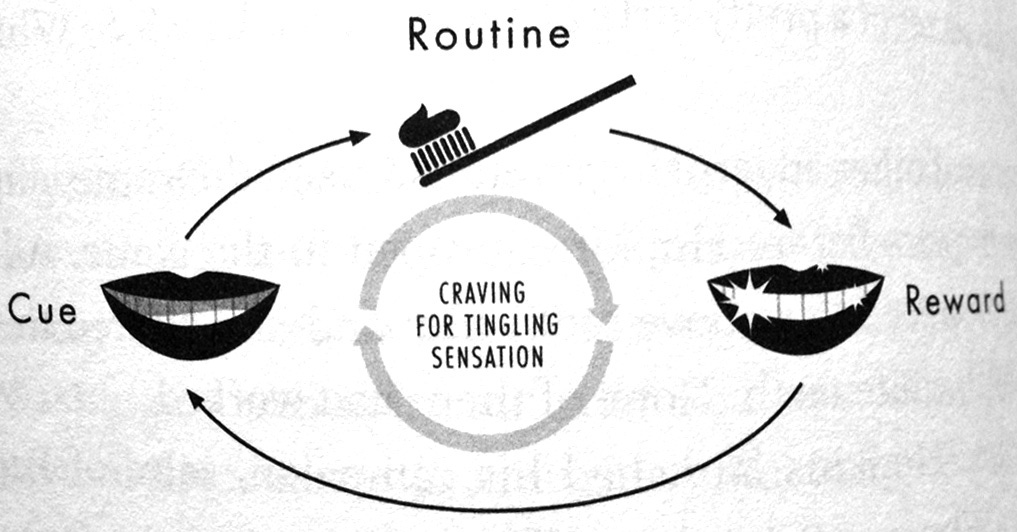The strange link between toothbrushing and data science!🪥
Hello,
We enjoy hiking and camping in the summer. After taking a full pause last year, we hit the trails again in 2021. We’ve been picking kid-friendly itineraries, with two elementary schoolers in the group. (I’m actively trying to influence them young!)
With the summer officially coming to an end, we’ve planned the season’s final camping this weekend. This would be a combo of open-field camping and expert-guided astronomy on the top of a mountain, in upstate New York. Really looking forward.
This newsletter will take you about 5 minutes to read.
I. Spotlight: The strange link between toothbrushing and data science!🪥
In the 1900s, Americans hardly brushed their teeth. Though toothbrushes were invented over 100 years earlier, brushing wasn’t a habit. Not until Pepsodent arrived on the scene.
Initially, Pepsodent struggled, quite like the other toothpaste makers. They then hired a brilliant marketer, Claude Hopkins.
(Picture by Nick Fewings on Unsplash)
Building a national brushing habit
Hopkins studied human behavior to come up with a smart plan. He learned that a film formed on the teeth every morning. He called it out as the prime reason for teeth that looked off-color, leading not just to decay but also a poor smile.
This was the cue for action. The solution?
Pepsodent suggested a routine by urging people to embrace a new method of teeth cleansing. “Why would any woman have dingy film on her teeth?” asked their ads.
Acting on the cue with this suggested routine delivered the irresistible reward - a prettier smile.
A simple cue, routine, and reward were a great start to building a habit. However, they were not sufficient. Pepsodent added another magical step - the craving!
The inventor of Pepsodent had included chemicals in the toothpaste to give it a minty taste. But this had an unintended side effect - a tingling sensation in the mouth. This feeling signaled to people that their teeth were clean. And it was addictive.
Any day people skipped brushing their teeth, they missed the tingling sensation. This, in turn, reminded them of the film on their teeth, their missed routine, and hence a poor smile. Thus, the craving reinforced the 3-step habit loop of cue-routine-reward!
Shortly after this campaign went live, the sales of Pepsodent exploded. Within a decade, tooth brushing in the US population jumped from 7% to over 65%.
This loop works today, over 100 years later. Now, almost all toothpaste include these chemicals to deliver a tingling sensation, though they have nothing to do with cleaning the teeth 😀
Picture: The Pepsodent habit loop (The Power of Habit, Goodreads)
Building a habit of data-driven decisions
“Anyone can use this basic formula to create habits of her or his own,” says Charles Duhigg, author of The Power of Habit.
How can we apply the habit loop to make data-driven decisions a behavior?
Identify the cue:
Human decisions are clouded by several biases. These dangerous blind spots trick even the smartest of people. Caution people on the hazards of acting from the gut - poor decisions, lost reputations, and failed businesses. Perhaps not as serious as an imperfect smile, but a noteworthy challenge nevertheless!
Recommend a routine:
Educate people on the use of analytical insights and data stories for informed decisions. Train people on this routine by using live data insights in every meeting and business review. This chore needs a lot of practice, just like brushing.
Deliver rewards:
To drive human behavior, you need intrinsic (felt) and extrinsic (seen) rewards. When organizational leadership walks the talk on data-driven culture, people will feel happy following suit (intrinsic). Set up awards for the best use of data for decisions across teams (extrinsic).
Create a craving:
“To create a craving, allow yourself to anticipate the reward,” recommends Duhigg. Have people envision a specific reward for following the routine - leadership recognition or winning the award. Focusing on the craving can turn it into a mild obsession.
As people experiment with the habit loop, it is critical to reinforce it. Use internal marketing and leadership messaging to drive home the point. Celebrate success stories to turn the fledgling habit into organizational behavior.
What’s your take - can the habit loop that transformed a nation’s dental hygiene help improve your team’s decision hygiene?
II. Industry Roundup:
1. Article: Why do CDOs have such short tenures?
8 minutes | HBR | Tom Davenport, Randy Bean, Josh King
The average tenure of CDOs is around 2 years. While the role is new and poorly defined at most organizations, the authors argue that part of the challenge is the inability of CDOs to sell their achievements to business audiences. The article shares why non-technical skills, change management, and partnering with key business leaders are crucial for success and extending the tenure of CDOs.
2. Article: How can you make AI scale?
16 minutes | HBR | Tim Fountaine, Brian McCarthy, Tamim Saleh
Many companies run a series of AI projects locally across functions. This doesn’t move the needle at an organizational level. Other companies try to overhaul the entire organization with AI, all at once. This complicated process often fails. A better approach is to take the middle path - pick a crucial slice of business and rethink it. This triggers a cycle of changes that build momentum for AI across the organization.
3. Research: Should you care about data culture?
16 pages | IDC | Chandana Gopal
What are the visible and invisible elements that influence an organization’s data culture? This report spotlights 5 trends in data-driven decisions based on survey of 1,100 respondents. It found that there’s a 46% difference in business performance metrics between data-leading companies and those that are just data-aware.
III. From my Desk:
1. Video: Will AI destroy more jobs than those it creates?
15 minutes | Gramener
No Job Is Future-Proof today. Will AI lead to net job loss? I interviewed Kevin Roose, NYT Journalist and author of the recent book, FutureProof. We debate whether the common arguments in favor of AI are misplaced. He shares how business leaders could adopt AI while protecting their employees.
2. Article: 4 Signals That Show A Data Culture Is Thriving In Your Org
6 minutes | Forbes
Is Data Culture just another buzzword? Leaders are often intimidated by the magnitude of efforts needed to change their culture. Your business can take small steps to start the data-driven journey and secure wins for building momentum. I share 4 signals that can help validate whether you’re moving in the right direction.
3. Mentoring: Helping non-profits use AI for social impact in Pennsylvania
ForbesFunds
The Innovation Lab at Forbes Funds is organizing a hackathon to advance equity in Southwestern Pennsylvania. Over the past week, I’ve been running office hours in partnership with the Nittany AI Alliance team at Penn State University, to help non-profit founders build compelling solutions using technology. From organizational bias to the gentrification of neighborhoods, the teams are tackling diverse and pressing topical issues. Excited to be a part of it.
Thank you for subscribing and reading the newsletter. I appreciate your attention,
Ganes.
PS: Did someone forward this to you? You can subscribe here.
My Website | LinkedIn | Twitter | YouTube
I’m Ganes Kesari. I publish ‘Data-Driven Future’ to help understand how data shapes our world, explore key trends, and explain what they mean for you today. I speak and write to demystify data science for decision-makers and organizations.
Recent Issues:








